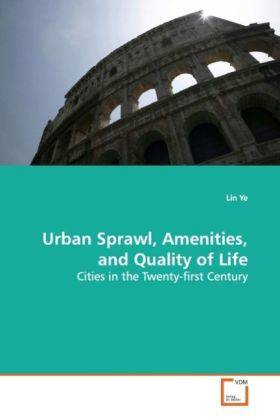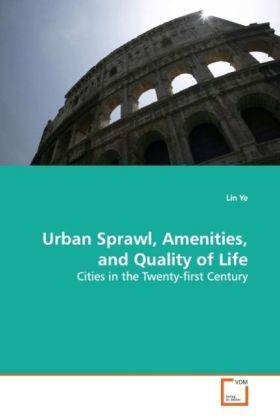
- Afhalen na 1 uur in een winkel met voorraad
- Gratis thuislevering in België vanaf € 30
- Ruim aanbod met 7 miljoen producten
- Afhalen na 1 uur in een winkel met voorraad
- Gratis thuislevering in België vanaf € 30
- Ruim aanbod met 7 miljoen producten
Zoeken
Urban Sprawl, Amenities, and Quality of Life
Cities in the Twenty-first Century
Lin Ye
Paperback | Engels
€ 58,45
+ 116 punten
Omschrijving
Urban sprawl has been one of the major development issues in the United States and many other countries. Sprawl affects every aspect of American lifestyles and the debate between sprawling and compact development has received enormous attention. This book seeks to discover whether compact development provides better urban amenities and quality of life for residents by surveying the largest ninety-nine metropolitan areas in the United States in 2000. Comparisons are drawn between central cities and suburbs to see how different places offer distinct amenities for their residents. Further questions are explored to probe the relationship between compact development, amenities presented, and quality of life among high- and low-density communities. The findings demonstrate the importance of compact development to provide desirable amenities and identify crucial policy issues for urban revitalization. This book can increase the consumer awareness of trade-offs between different lifestyles and serve as a policy guide for fighting sprawl and building a brighter urban future in America.
Specificaties
Betrokkenen
- Auteur(s):
- Uitgeverij:
Inhoud
- Aantal bladzijden:
- 156
- Taal:
- Engels
Eigenschappen
- Productcode (EAN):
- 9783639063738
- Verschijningsdatum:
- 20/11/2008
- Uitvoering:
- Paperback
- Formaat:
- Trade paperback (VS)
- Afmetingen:
- 152 mm x 229 mm
- Gewicht:
- 217 g

Alleen bij Standaard Boekhandel
+ 116 punten op je klantenkaart van Standaard Boekhandel
Beoordelingen
We publiceren alleen reviews die voldoen aan de voorwaarden voor reviews. Bekijk onze voorwaarden voor reviews.











